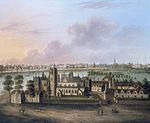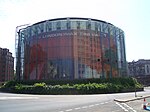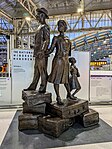St John's Church, Waterloo
19th-century Church of England church buildingsAnglican Diocese of SouthwarkChurch of England church buildings in the London Borough of LambethChurches bombed by the Luftwaffe in LondonChurches completed in 1824 ... and 2 more
Grade II listed churches in LondonGreek Revival church buildings in the United Kingdom

St John's Church, Waterloo, is an Anglican Greek Revival church in South London, built in 1822–24 to the designs of Francis Octavius Bedford. It is dedicated to St John the Evangelist, and with St Andrew's, Short Street, forms a united benefice.
Excerpt from the Wikipedia article St John's Church, Waterloo (License: CC BY-SA 3.0, Authors, Images).St John's Church, Waterloo
Waterloo Road, London Lambeth (London Borough of Lambeth)
Geographical coordinates (GPS) Address External links Nearby Places Show on map
Geographical coordinates (GPS)
| Latitude | Longitude |
|---|---|
| N 51.5045 ° | E -0.112 ° |
Address
Saint John's, Waterloo
Waterloo Road 73
SE1 8TY London, Lambeth (London Borough of Lambeth)
England, United Kingdom
Open on Google Maps











